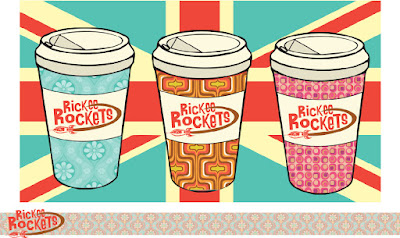I thought I would take a look at another project from my branding course last semester. This time the brief was to create an expensive/gourmet single serve meal(including package design) for Wal-Mart. Ideally, the meal and it's package would be as recyclable as possible.The contents of the meal and the target audience was left up to the students. Once again, I started this project
off with a lot of ideas. I decided immediately that I
wanted to get weird with it. I initially pitched several ideas including: A hobo meal that came wrapped in a handkerchief at the end of a stick, an astronaut meal where everything came in tubes, a frat star meal that contained a beer bong etc. Ultimately I decided to take the low route by attacking the stereotypical Wal-Mart customer, the redneck. Admittedly I may have taken the humor so far as to
negate any practicality.
I felt as if a redneck meal was the
perfect fit for Wal-Mart. However, my
original lighthearted tone regarding the subject matter was slowly replaced by
a mean streak. I elected to base my box design around a buckle, because it was
the most visually interesting diagram I found online. From that point the image
of a beer belly barely contained by a wife beater and jeans came naturally to
mind. This certainly was not the high-class meal option that the brief was
looking for. This issue was compounded when I decided that a confederate flag
was the right buckle to anchor my design around. I took the red, blue, and
white and plastered it on everything. While it made sense with my concept and tone,
I am not confident that it was in line with the assignments goals. I did manage
to inject some lighthearted humor with my employment of the box itself as an
animal trap. But, perhaps I took it too far when I included bigotry on the list
of ingredients. That being said, I would rather take something too far then not
far enough. This assignment
was unique for the semester because it was not for a real client. It was a rare opportunity to go in a strange
direction.
I tried to brainstorm the strangest
food items I could put into the box. To be honest, I spent the majority of this
project working on the look of the food items and I think that’s pretty evident
in the final product. The food display was the first page I worked on and I was
so proud of that page that I was forced to commit to that art style for the
rest of the project. It was a lot more difficult to adapt that style to the
rest of the assignment and the whole package suffered for it. I chose the
moonshine over beer or RC cola because the jar could be reused after the rest
of the box was disposed of. I initially wanted the meal to be based around some
kind of squirrel jerky or stew, but ultimately felt that mystery jerky was a
funnier option. Furthermore, I chose to package the jerky in a cup in an
attempt at dual functionality. A redneck that dips is always in need of a
spitter. When the consumer goes to the chewing tobacco for dessert they can
reuse the thick paper cup as a spitter. The corn, moonpie and tobacco are just
redneck staples and I needed smaller food items to round out the meal.
I came up with the inside packaging
last. I was still trying to keep that idea of recyclability in mind so anymore
cardboard or paper was out of the equation for me. I figured if I was taking
the joke this far anyway, I should use hay as the packing material to cushion
the food items. The type of person this meal is catering to likely would not
care if their meal had a bit of hay on it. Following this logic I left the corn
and moonpie unpackaged to further reduce waste. The added benefit of using hay
was its dual use as bait for the rabbit trap.
Overall, I like how the project
turned out. When I rework everything for my portfolio come spring, I will definitely consider changing the
art style. I also think that the box needed to be mocked up in order to
function as a portfolio piece. The execution can always go higher when not limited by time constraints.









